 |
 |
||||||||||
Click here to order ONANISME MANU MILTARI by LUKAS ZPIRA now! A review by Shannon Larratt Lukas Zpira, as a person, is extremely stylish and fashionable, and this book, intended to capture his artistic vision, mirrors that aesthetic. But I must be honest with you. I’m not a stylish or fashionable guy, and it’s probably fair to say that I am actively unfashionable in fact. Not only that, but I don’t care much for modern art, and less for the explanations artists use to justify it — so much so that it makes it difficult for me to relate to this book, and for that I apologize. An enormous amount of effort has been done on processing and manipulating the photos and layout. In some ways this is good, because it captures the feel of Lukas Zpira as an artist, but, on the other hand, it also distorts the images so much that what most of us perceive as Lukas’s actual art, contained in the photos, is difficult to make out and is no longer able to speak for itself. Rather than presenting the pieces as they were created, the book retells them not as the world sees them, but as Lukas Zpira sees them. One could also argue that nearly all of the photos in the book have already been published online in a far clearer and more effective way. The text of the book I feel makes the same presentation error (or success), although I’m sure a great deal is lost in the translation (it is written with both English and the original French). Most of the writing is highly philosophical, abstract, and arty, and in some ways feels like it’s “trying” to be so. For me, body art is a very down to earth subject, and personally I like seeing it presented in terms that are honest and tangible. Since I couldn’t relate to most of the text, I found myself seeing it as boring, shallow, and misleading. Maybe I’m missing the point, or maybe other people are fooling themselves into thinking there’s a point a la The Emperor Wears No Clothes. I have no idea. While I do believe that this limited edition book is an essential addition to any body modification and body art library, I worry that Lukas Zpira has perhaps limited himself by presenting such a pure expression of his art — of himself — rather than opening a clearer channel for the uninitiated — or those like me with different tastes — to understand it. Or perhaps those people will never understand the core of what Lukas Zpira is saying — it’s not as if I’ve gotten better at choosing clothes that match as I’ve aged. If anything, I’ve gotten worse. But really, I’m looking at and reviewing the book in entirely the wrong way. It’s not a portfolio of Lukas’s work. It’s not a grounded discussion of scarification, piercing, and surgical body modification, nor is it supposed to be. If you’re looking for that, you won’t enjoy or find meaning in the book. But if you come into the experience looking to discover the essence of Lukas Zpira’s vision, independent of the corporal aspect of his work, you’ll find it. ONANISME MANU MILITARI II exists separate from the scalpels and the spatulas, and even separate from the skin that adorns its pages — it is a work of art in and of itself. – Shannon Larratt A Review by Jordan Ginsberg To give credit where it’s due, few artists in the body modification community have propelled themselves to “rock star” status quite like Lukas Zpira has. Really, he’s like the U2 of body artists: From day one, he’s made himself out to be the biggest, most interesting and important thing out there, and has done so with no apologies. Initially making a name for himself as a world-class scarification artist, Zpira quickly began winning crowds over with his sideshow-cum-fetish performance art group, ART KOR, which fused suspension and bloodletting with more traditional fetishistic aspects — such as Japanese rope bondage — in a far more sexual manner than many other performers were embracing at the time. Thanks to the uniqueness of his work, his larger-than-life attitude about himself, and his relentless touring schedule — taking his act and his art all over the world many times over — Lukas quickly reached veritable celebrity status. More than just a showman though, Zpira has always emphasized the philosophical backing behind the work that he does and the lifestyle he espouses, a body of thought that he’s dubbed “Hacktivism.” Rather than following the path of the modern primitives, Zpira’s Hacktivism seems to be the modus operandi of the cyberpunk-fakir — a methodology based on how these rites of the flesh relate to the future rather than their tribal histories. Onanisme Manu Militari II, Zpira’s new Hors-Editions book, is an unfortunate misfire in several respects, particularly due to its attempts to be too many things at once; unsure of whether it wants to be a photography-based coffee table book or a philosophical guide, the result is a messy synthesis of the two. The book is not an absolute disappointment, of course. Primarily a photo-based work, shots from a variety of photographers — including Zpira himself — are included, and by and large it’s all top-notch. Bright, brilliantly saturated colors contrasted with heavy shadows bring out the best in the subjects, whether they’re clients of Lukas’ bearing scars or implants he’s performed, or occasionally even Lukas himself. As a showcase of his work, the book works extremely well; Lukas is undoubtedly highly skilled, and brings to the table an exciting, unique style of scarification, as well as fresh takes on implant designs and other pseudo-surgical procedures such as ear-pointing and tongue-splitting, all of which get their time in the spotlight in the book. Often augmented with distressed filters and scorched backgrounds, the images themselves are generally striking and fascinating; sadly, they suffer from the book’s small format. Presented on standard 8.5 by 11” paper, high-quality glossy as it may be, photos such as these would have benefited far more from being published in a larger format, more traditional coffee-table book size. With shots as busy and full as these, each one should be treated more like an event than as just another page in a book, so to speak. Where the wheels really begin to come off, however, is the textual content. Again, Zpira is markedly philosophic in his background, and I wouldn’t suggest that he’s anything but authentic in his beliefs; that said, the written portions of the book largely come off as little more than pretension masking an absence of viable content. Though the text is limited to a handful of short essays — printed in both English and French — that are seldom longer than a single page, they’re as distracting as they are difficult to concentrate on. Now, this is not to put it all on Lukas — there are a number of authors featured in addition to Zpira, though their segments are essentially limited to discussing their (very, very similar) takes on Lukas himself, rarely reaching beyond fellatious back-slapping and sophomoric musings on any number of “cyber”-based compound words. Now, while not written by Lukas, the inclusion of these passages speaks as little more than blatant self-aggrandizement, which is not necessarily out of place altogether, but the extent of its presence here is somewhat suspect. Zpira’s portions, while marginally more substantial, are unfortunately disappointing as well—because they often suggest that there is more to the story than he chose to share. Ranging from the autobiographical and the political to the poetic and apocalyptic, the topics covered are broad in scope, yet all coalesce at a similar yet borderline incoherent point; south of “Be what you want to be,” but just north of “Evolve or die!” Zpira’s philosophy is almost transhumanist in some respects; not simply an acknowledgement that the human body is imperfect, it also embodies an effort to correct this biological error. Though, while transhumanists typically seek more medical and scientific-related fixes, the Hacktivist revolution is ostensibly an aesthetic one; a method of reinventing one’s self by reshaping one’s image and identity; better living through keloids, if you will. And of course, this is not to discount it, but to see it propped up as a grand calling of the future is mostly disingenuous, and tragically overblown. Finally, clocking in at a brisk 126 pages, the 40-Euro (roughly $50 USD) price tag is quite steep. Were it in a larger format and maybe 100 pages longer, focusing more on the photography and less on pretentious techno-babble, such a cost may be justifiable. It’s well produced, with a sturdy hardcover and unquestionably high-quality images, but the presentation simply does not do the art justice. While this is without question a must-have for admirers of Lukas and his work, those with little attachment or knowledge of him would likely be better off checking out his web site before spending the money on this book. – Jordan Ginsberg This page and its contents are © 2005 Shannon Larratt – Reproduced under license by BMEzine.com LLC. All rights reserved. Requests to reprint must be confirmed in writing. For bibliographical purpose this review was published September 16th, 2005 in La Paz, BCS, Mexico. |
|||||||||||
Post navigation
One thought on “ONANISME MANU MILTARI II by Lukas Zpira [The BME Book Review]”
 BME/News and Modblog highlight only a small fraction of what BME has to offer. Take our free tour and subscribe to BME for access to over 3 million body modification related photos, videos, and stories.
BME/News and Modblog highlight only a small fraction of what BME has to offer. Take our free tour and subscribe to BME for access to over 3 million body modification related photos, videos, and stories.
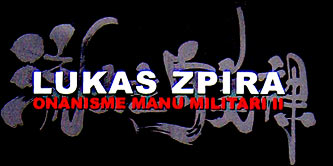
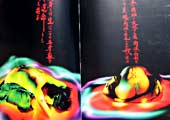
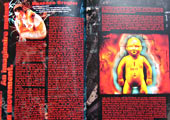
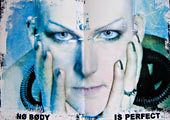
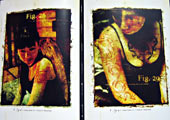
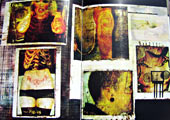
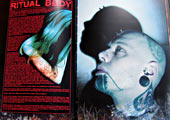
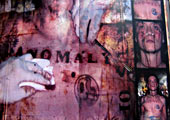

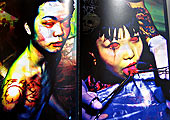
“as a grand calling of the future is mostly disingenuous, and tragically overblown”
“pretension masking an absence of viable content”
“yet all coalesce at a similar yet borderline incoherent point”
… really ? time tales everything ̶b̶i̶t̶c̶h̶ Jordan …
http://hackingthefuture.blogspot.com.au/2009/03/shannon-larrat-exclusive-interview.html.
Enjoy